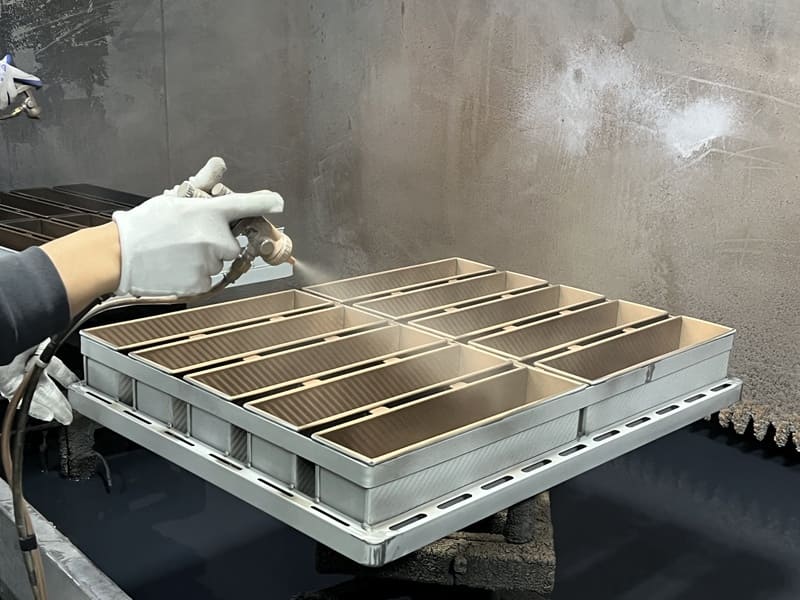When it comes to baking bread at scale, every detail counts—especially the loaf pan. I’ve worked with both non-stick and unfinished aluminum loaf pans for years, and I’ve learned that the differences between them are more than just surface-level. Let’s break it down.
Non-stick loaf pans offer excellent bread release and easy cleanup, while unfinished aluminum pans provide durability and high heat conductivity. Choosing the right one depends on your production scale, maintenance routine, and baking priorities.
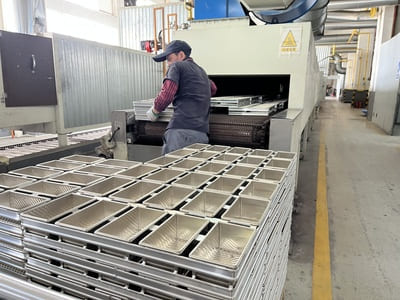
Whether you’re running a massive bakery or just trying to keep things efficient at a growing chain, picking the right commercial loaf pans is a decision that shows up in every single loaf. Let me walk you through what I’ve learned after years of handling both types on the production line.
What Is the Difference Between Non‑Stick and Bare Aluminum Loaf Pans?
Choosing the right loaf pan starts with understanding how they’re built and how they behave in real-world baking.
Non-stick pans have a coated surface that helps release bread easily, while unfinished aluminum pans rely on seasoning and conductivity for performance.
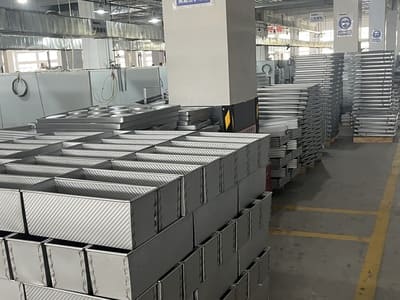
A Hands-On Look at Both Types
Let’s get into the nuts and bolts—literally. Non-stick loaf pans are typically aluminum pans coated with PTFE or silicone-based materials. The goal? Make your bread slide out without a fight.
Bare or unfinished aluminum pans, on the other hand, skip the coating. These pans rely on raw material strength, heat conductivity, and sometimes natural seasoning from regular use to achieve solid results. Think of them like a cast iron skillet—you’ve got to break them in a bit, but once you do, they’re incredibly reliable.
| Feature | Non‑Stick Loaf Pan | Unfinished Aluminum Loaf Pan |
|---|---|---|
| Bread Release | Easy and consistent | Good, improves with seasoning |
| Cleaning | Quick wipe-down | Requires scrubbing and care |
| Durability | Depends on coating quality | Very durable and warp-resistant |
| Ideal For | Delicate bakes, sticky doughs | High-volume baking, heavy-duty use |
| Common Use | (non-stick loaf pan for bakery) | (aluminum loaf pan for commercial use) |
Is Non‑Stick Coating Safe and Durable for High-Temperature Baking?
I get asked this a lot, especially from folks baking at high volumes or working with intense ovens.
Modern non-stick coatings are generally safe for baking temperatures under 260°C (500°F), but repeated use and abuse in commercial settings can wear them out faster than raw metal.
My Experience with Coating Breakdown
I’ve used non-stick pans that lasted over a year in light-duty settings. But when we scaled up and used them 8 hours a day, five days a week? That slick coating started bubbling or fading within months.
Even the best non-stick loaf pan for bakery use can wear down if you’re constantly running them through aggressive cleaning cycles or exposing them to metal tools. So, if you want a coating that lasts, go for high-quality PFA or reinforced PTFE coatings—and baby them.
On the flip side, industrial bread pans made from unfinished aluminum can take a beating. No coating means nothing to degrade, just solid, heat-conducting metal. Add a good release spray or a liner, and you’re set for the long haul.
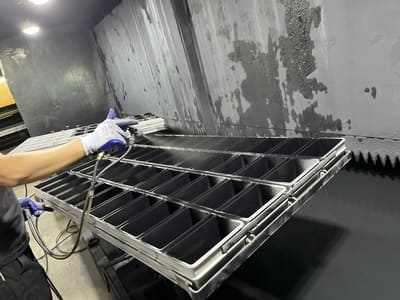
Which Loaf Pan Releases Bread Better: Real Tests and Results
Let’s get real—no one wants to yank out a loaf with half of it stuck to the corners.
In side-by-side baking tests, non-stick pans consistently outperform aluminum pans for bread release, especially for enriched doughs like sandwich loaves.
Our Pullman Pan Test
A while ago, I ran a release test using two sets of Pullman pans for sandwich bread—one coated, one bare. We baked the same dough, under the same conditions. The results?
- Non-stick pans: Released effortlessly, zero residue.
- Unfinished pans: First few batches stuck a little, but after some seasoning and spraying, they improved.
Still, if you’re baking high-fat breads or sticky recipes, non-stick will save you stress. But if you’re producing hundreds of loaves daily and can’t afford to replace pans every few months, unfinished might be your guy—just add some parchment or release spray to your workflow.
How to Maintain and Clean Each Type for Long-Lasting Performance
Durability doesn’t just come from design—it’s also about how you treat your pans every day.
Non-stick pans need gentle cleaning and zero abrasives, while aluminum pans tolerate heavier scrubbing but require seasoning and careful drying.
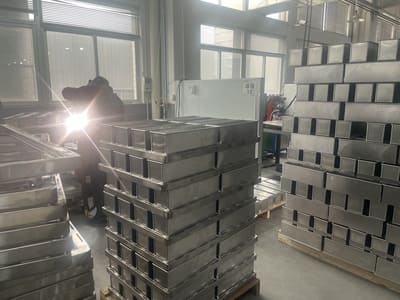
Real Talk on Maintenance
Here’s where I’ve seen most pans fail—not from baking, but from bad cleaning routines.
For non-stick pans:
- No metal tools. Ever.
- Wash with soft sponges and avoid dishwasher heat.
- Store dry and upright to avoid scratches.
For aluminum pans:
- Scrub with nylon brushes if needed.
- Avoid letting water sit—dry them fast.
- Build seasoning through regular use and oiling.
In my opinion, heavy-duty loaf pan options should always be paired with staff training. It’s not just about what pans you buy—it’s how your team treats them every shift.
Conclusion
Choosing between non-stick and unfinished aluminum loaf pans isn’t a one-size-fits-all decision. It’s about what works best in your world—whether that’s a fast-paced industrial bakery, a high-end artisan bread shop, or a chain with 20 ovens running at once. Me? I’ve learned to match the pan to the project. Some days call for the ease of a non-stick finish. Others, the rugged reliability of raw aluminum. Either way, with the right care and setup, your durable bread baking trays will keep delivering batch after batch of perfect loaves.

